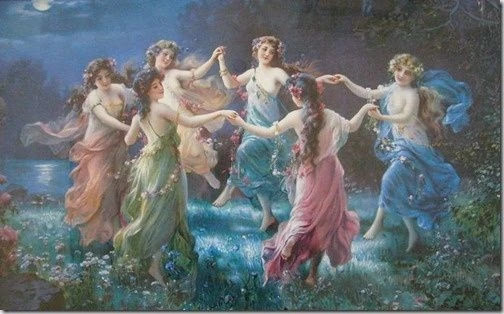Nymphs: Enigmatic Spirits of Nature
In the rich tapestry of Greek mythology, there exist a multitude of beings, both divine and terrestrial, each with their own unique characteristics and significance. Among these entities, nymphs hold a special place. Nymphs are ethereal spirits of nature, often portrayed as beautiful and alluring, who inhabit the various elements of the natural world.
The Origins of Nymphs
Nymphs are deeply rooted in Greek mythology and can be traced back to the earliest literary and artistic works of ancient Greece. They are typically considered the daughters of various deities, such as Zeus, Poseidon, and other gods associated with nature. Nymphs are known to inhabit and personify natural features, including mountains, rivers, forests, and seas, and their origin stories are closely tied to these elements.
Types of Nymphs
There is a wide variety of nymphs, each associated with a specific natural element or location. Some of the most well-known types of nymphs include:
Naiads: Naiads are nymphs of freshwater, residing in lakes, rivers, and streams. They were often depicted as graceful maidens, nurturing the aquatic ecosystems they inhabited.
Dryads: Dryads are tree nymphs, dwelling within the trunks of trees and representing the spirit of the forest. Harming a tree inhabited by a dryad was believed to bring about the nymph's displeasure.
Nereids: Nereids are sea nymphs, daughters of the sea god Nereus. They are often depicted as beautiful maidens, gracefully swimming alongside marine creatures in the depths of the sea.
Oreads: Oreads are mountain nymphs, associated with the rugged terrain of mountains and rocky outcrops. They are often portrayed as athletic and untamed.
Hamadryads: Hamadryads are a specific type of dryad, bound to a particular tree. They were believed to live only as long as their tree remained healthy, making them guardian spirits of the forest.
Nymphs of the Underworld: These nymphs inhabited the shadowy realms of the underworld. Among them, the most famous is Eurydice, the wife of Orpheus, whose tragic tale is recounted in Greek mythology.
The Enigmatic Role of Nymphs
Nymphs play various roles in Greek mythology, from serving as muses for poets and artists to interacting with gods and mortals in tales of love and transformation. They often personify the harmonious connection between humans and nature, embodying the idea that the natural world is alive with its own spirits and influences.
In Literature and Art
The allure of nymphs has extended beyond the realms of mythology, leaving an indelible mark on literature, art, and culture. Writers and artists have drawn inspiration from these ethereal beings, incorporating them into stories, paintings, and sculptures that celebrate the beauty and mystery of the natural world.
Conclusion
Nymphs, the enchanting spirits of nature, continue to captivate our imaginations with their ethereal beauty and connection to the natural world. In Greek mythology, they symbolize the intimate relationship between humanity and the environment, reminding us of the profound influence of nature on our lives. As we explore the myths and representations of nymphs, we gain a deeper appreciation for the intricate and interconnected tapestry of mythology and the enduring allure of the natural world.

_edited.jpg)
Comments
Post a Comment